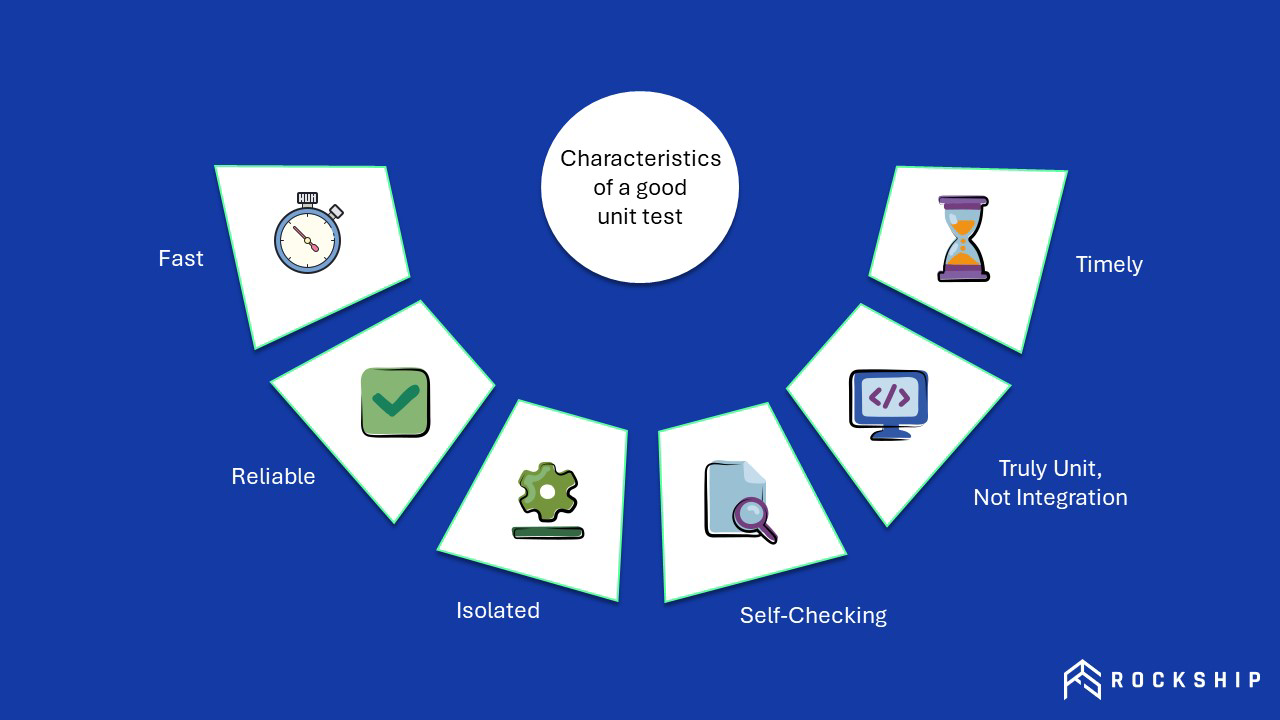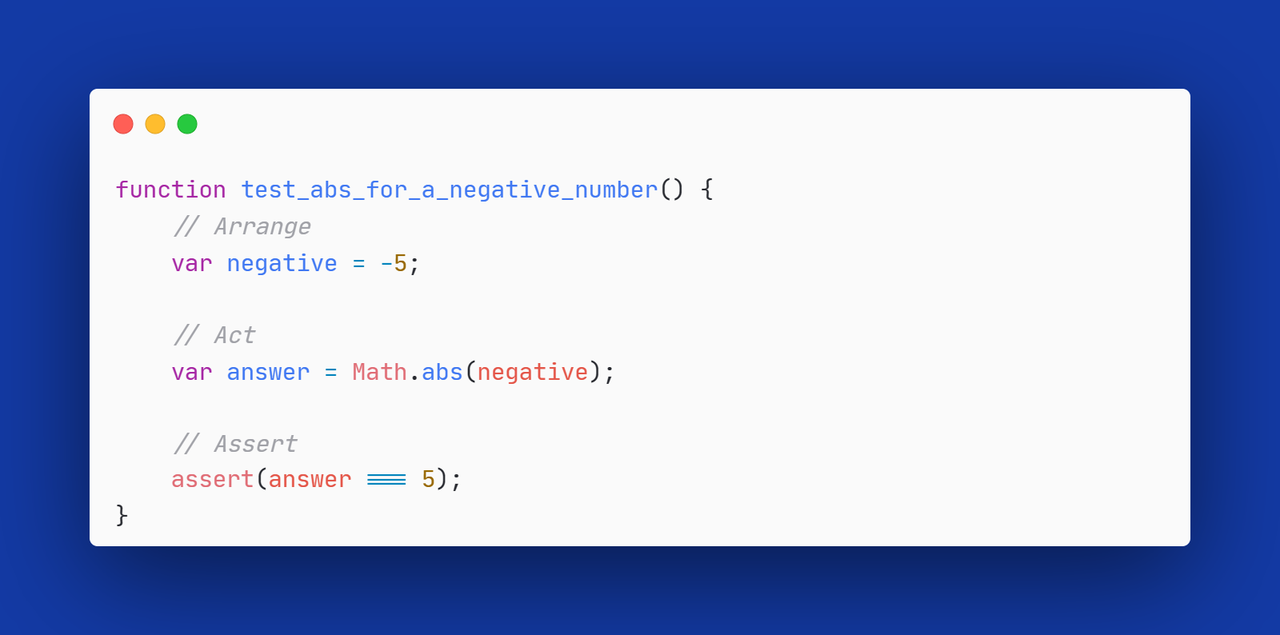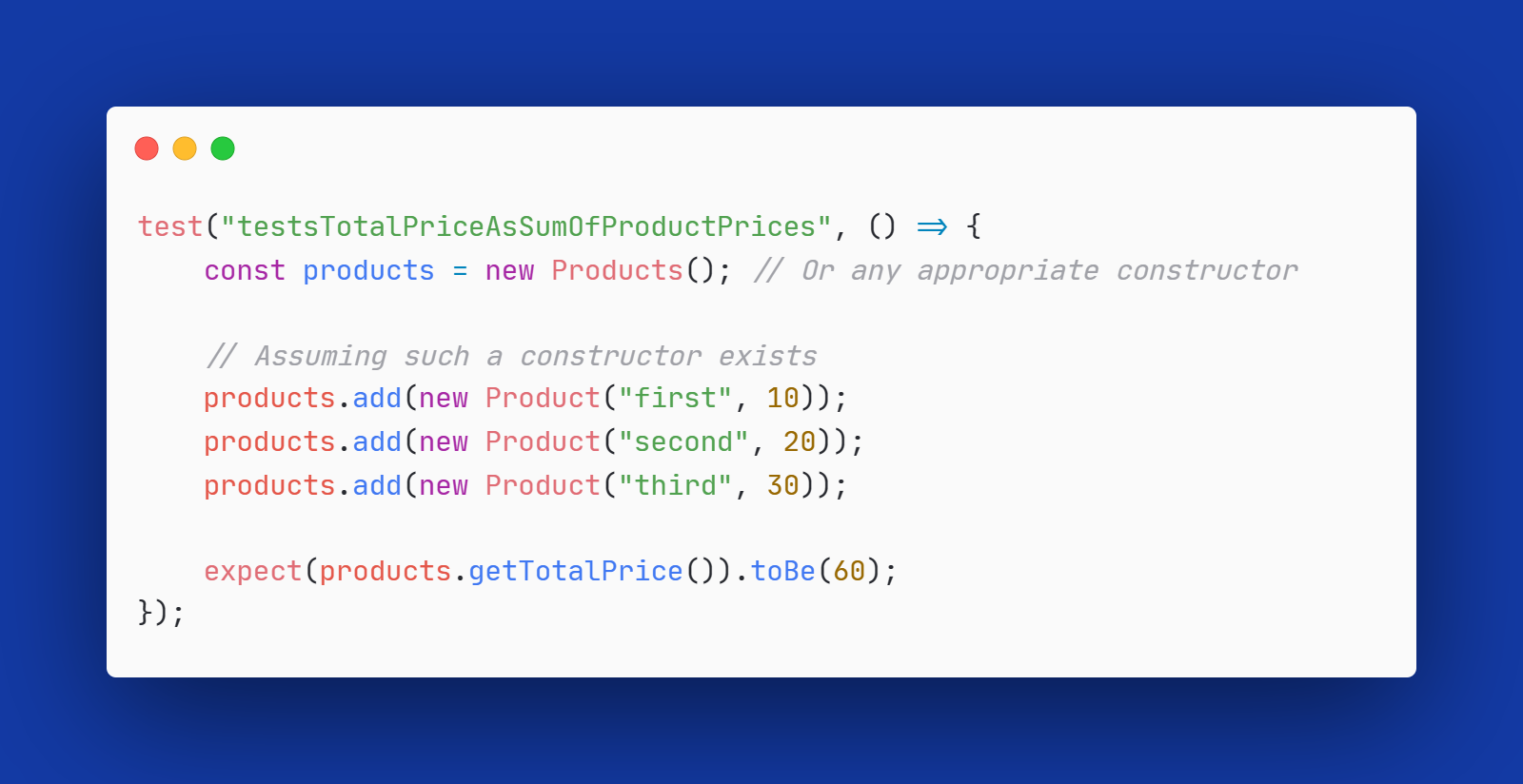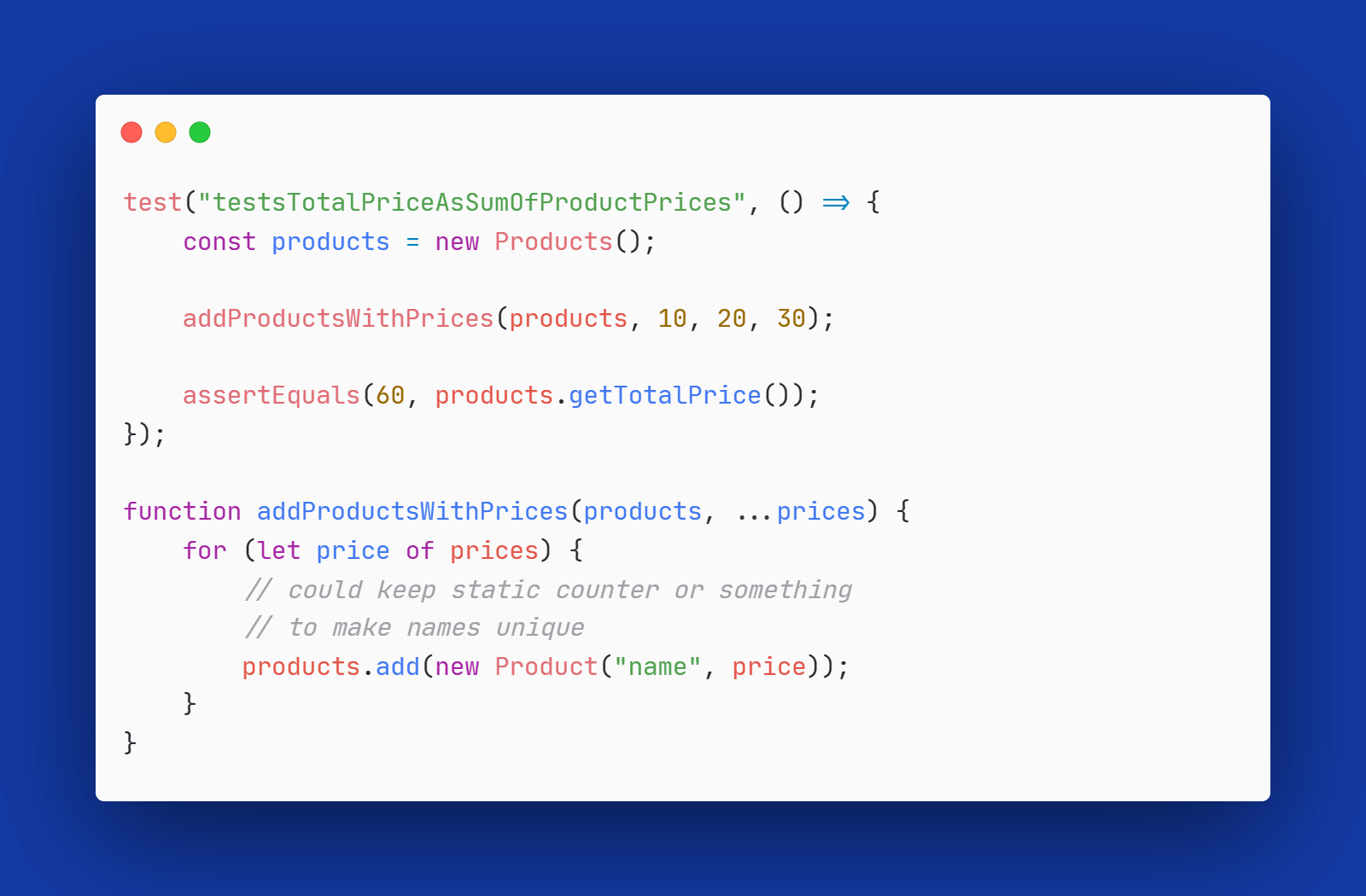Unit testing plays a crucial role in the software development life cycle (SDLC) as it enables you to assess the code's quality and mitigate the potential performance issues that may arise once the software is deployed. Although each company or developer may have their own established approach to conducting unit tests, this blog shares best practices that you can incorporate into your testing process.
What is Unit Testing?
Unit testing involves dividing the code into small, independent units that can be tested individually. This approach allows for easier test design, execution, recording, and analysis compared to testing larger sections of code. By isolating these units, errors can be quickly identified and resolved early in the development process. Unit tests are functional tests specifically created and executed by software developers.

The definition of a "unit" in unit testing is not fixed and depends on the specific situation, allowing developers to make their own decisions. In object-oriented programming, a unit could be a complete class or interface, while in procedural programming, it might be an individual function. The primary goal of unit testing in software engineering is to confirm and compare the real behavior of software components with their expected behavior.
Role of Unit Testing
- Offers prompt and ongoing feedback during the SDLC, allowing for early detection and response.
- Provides precise feedback by focusing intensely on specific aspects of the code.
- Ensures that the product meets established quality standards before it is deployed.
- Developed by software engineers to test the functionality of isolated units, employing techniques such as test doubles (e.g., stubs, mock objects) to replace missing components in test modules.
- Facilitates continuous testing of application modules without the complexities of dealing with external services or dependencies.
- In essence, it creates a dependable engineering environment for developers, emphasizing efficiency, productivity, and the production of high-quality code.
Tips: As unit testing alone does not verify the interaction between different units or their dependencies, it is essential to combine it with other types of tests to ensure the seamless functioning of the software as a cohesive whole.
Characteristics of A Good Unit Test

Before delving into best practices for software unit testing, it is crucial to grasp the defining characteristics of a well-designed unit test. The following properties outline what constitutes a good unit test:
- Fast: Unit tests should execute swiftly since a project may encompass numerous unit tests. Slow-running tests can lead to frustration among testers and consume excessive time. Moreover, as unit tests are repeatedly executed, developers might skip running them altogether, potentially resulting in the delivery of faulty code.
- Reliable: Reliable unit tests only fail when there is a genuine bug in the underlying code, which is easily identifiable. However, there are instances when tests fail even in the absence of bugs due to design flaws. For example, a test may pass when executed individually but fail when run as part of a larger test suite or on a continuous integration (CI) server. Additionally, unit tests should be reusable to prevent redundant effort.
- Isolated: Unit tests should operate in isolation, devoid of any dependencies on external factors such as the file system or database. They should be independent of external environmental factors as well.
- Self-checking: Unit tests should automatically determine their own pass or fail status without requiring human intervention.
- Timely: If the time spent writing unit test code exceeds the time taken to write the code being tested, it may indicate the need for a more practical design. A good unit test should be easy to write and avoid excessive coupling.
- Truly unit, not integration: Unit tests should remain independent and not transform into integration tests by incorporating multiple components. They should stand alone and remain unaffected by external influences.
While testing guidelines may vary across platforms and projects, adhering to a set of general best practices for unit testing can be beneficial.
Unit Testing Best Practices
1. Write Readable Tests
Easy-to-read tests are comforting to understand how your code works, its intent, and what went wrong when the test fails. Tests revealing the setup logic at first glance are more convenient for figuring out how to fix the problem without debugging the code. Such readability also improves the maintainability of tests, since the production code changes are required to be updated in the tests also. Moreover, difficult-to-read tests create more misunderstandings among developers, resulting in more bugs. Following is an example of a perfectly readable unit test for JavaScript’s absolute value function:

Also, unit tests naturally serve as documentation, since they describe the behavioral aspect of the subject and validate it. So when you write clear and readable tests, you’re not only doing your future self a favor but also to other developers who are new on the team or are not even hired yet. It instantly familiarizes them with code and entire systems without bothering anyone else.
Now, to answer how to write easy and enjoyable tests to read, here are some effective ways.
- Firstly, have a sound naming convention for every test case. Name tests in such a way that it instantly describes the subject, what scenario is being tested, and the expected result.
- Secondly, use Arrange, Act, Assert pattern to clearly define the test phases and enhance readability.
- Lastly, avoid using magic numbers or strings in the test cases, which takes us to our next tip.
2. Avoid magic numbers and magic strings
The use of magic strings or numbers confuses readers since it makes the tests less readable. In addition, it diverts readers from looking at the implementation details and makes them wonder why a particular value has been chosen instead of focusing on the actual test. Here is an example code snippet with a magic number:

On the other hand, if a constant needs to be changed, changing it in one place updates all the other values. So, it is better to use variables or constants in the tests for assigning values. It would help you to express as much intent as possible while writing tests. Now, let’s replace the magic number with a constant that has a readable name and explains the meaning of the number.

3. Write Deterministic Tests
Deterministic tests either pass all the time or fail all the time until fixed. But they exhibit the same behavior every time they are run unless the code is changed. So a flaky test, aka a non-deterministic test that sometimes passes and sometimes fails, is as good as having no test at all.
For instance, you built a unit test for the function calculateInterest(), and it passed. It should continue to pass until changes are made to calculateInterest(). Or if it fails, it should fail every time, even if it is run ten or a thousand times, until the error with calculateInterest() is fixed. If the test is flaky, developers don’t trust it and render it irrelevant, as there is no definite indication of a bug in the code or any clear output.
To avoid non-deterministic tests, ensure that they are completely isolated and are not dependent on other test cases. You can fix flaky tests by controlling external dependencies and environmental values like the current time or language settings of the machine.
4. Avoid test interdependencies
Test runners generally run multiple unit tests at a time without sticking to any particular order, so interdependencies between tests make them unstable and difficult to execute and debug. You should ensure each test case has its own setup and teardown mechanism to avoid test interdependencies.
For example, suppose the test runner is running a few tests in a particular order for a while and a new test is added without its own setup. Now, if the test runner runs all the tests parallelly to reduce execution time, it’d disorient the whole test suite, and your tests will start failing.
Now the question is, how to write completely independent tests?
The first is, do not assume anything based on the order that you write test cases. If tests are coupled together, isolate the code into small groups/classes to be tested independently. Otherwise, changes in one unit can affect other units and cause the entire suite to fail.
5. Avoid logic in tests
Writing unit tests with logical conditions and manual strings concatenation increases the chances of bugs in your test suite. Tests should focus on the expected end result instead of the implementation details. Adding conditions such as if, while, switch, for, etc., can make the tests less deterministic and readable. If including logic in a test seems unavoidable, you can split the test into two or more different tests. For instance, take a look at the code below with logic.

Now, refer to the refactored code below without logic. Isn’t it clean and easier to read?

Conclusion
Software Testing is such an important thing in software development life cycle, as it helps us to avoid unnoticeable bugs and maintain the harmony between the development team.
In this blog, we present 5 best practices related to writing good unit testing: Write Readable Tests, Avoid magic numbers and magic strings, Write Deterministic Tests, Avoid test interdependencies, Avoid logic in tests.
We hope these practices can help you in testing your software product. Stay tuned and follow Rockship Blog for part 2 for more useful unit testing tips or try our AI Assistant Chatbot for quotation of your software project idea.



